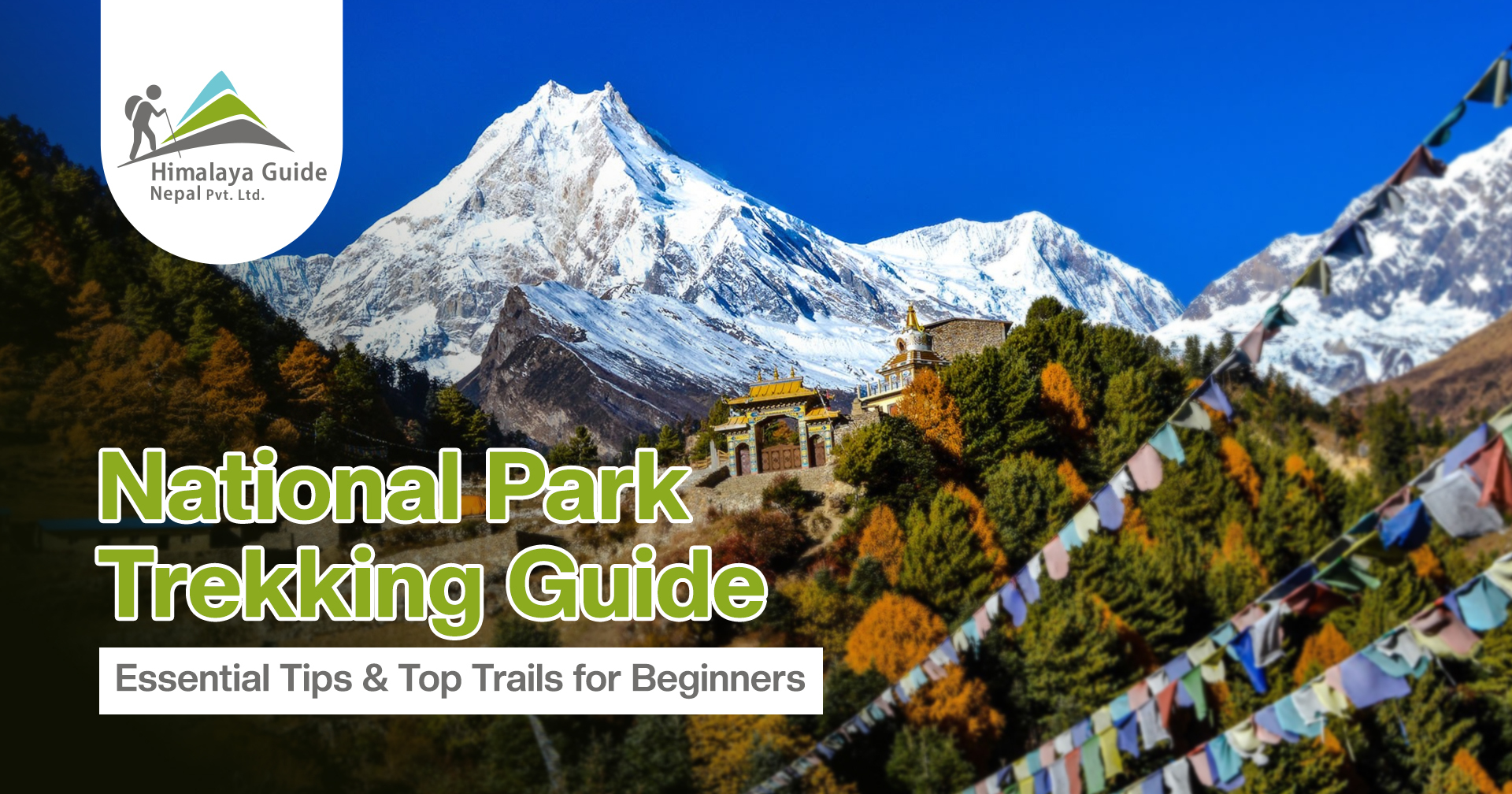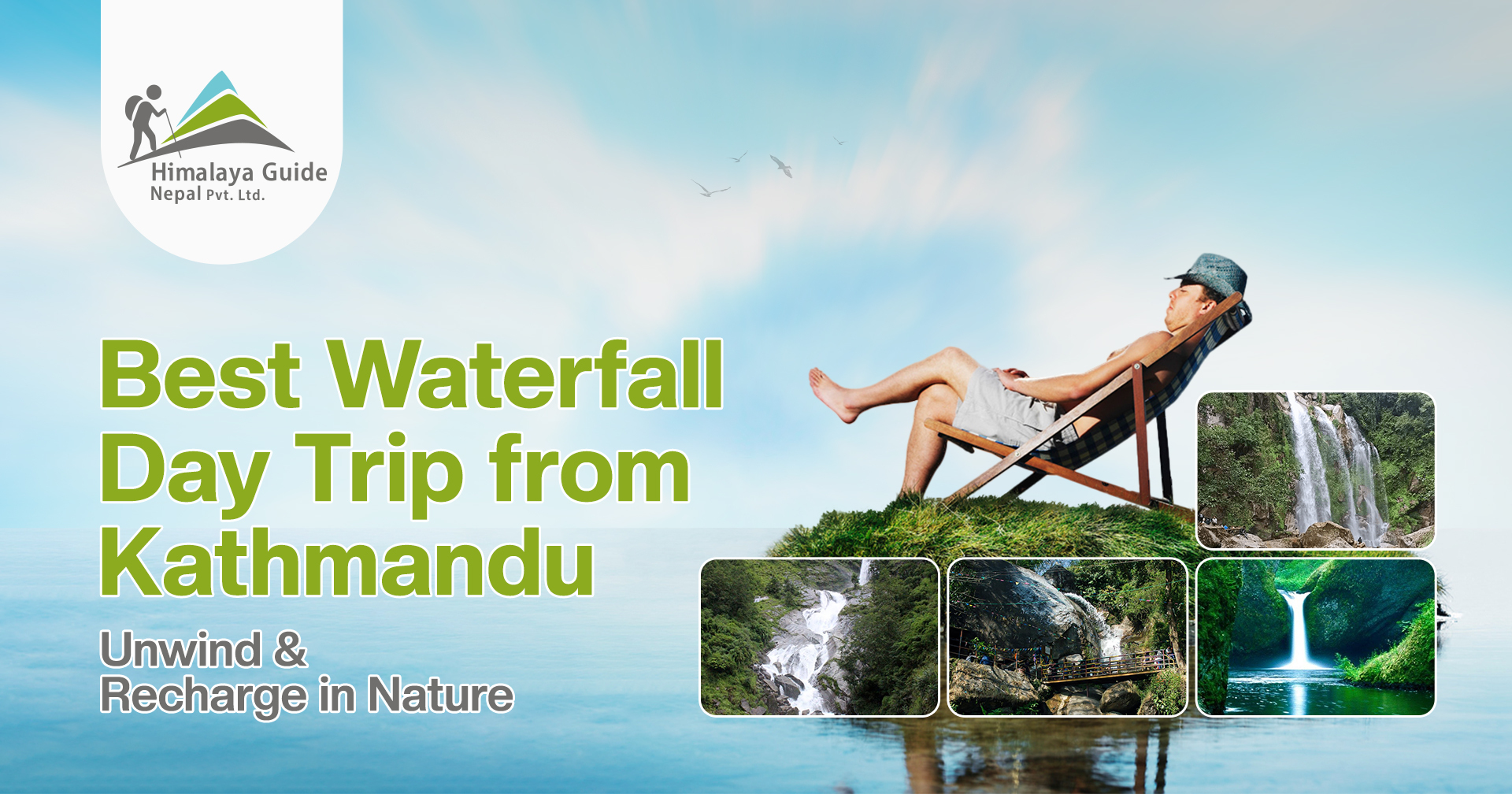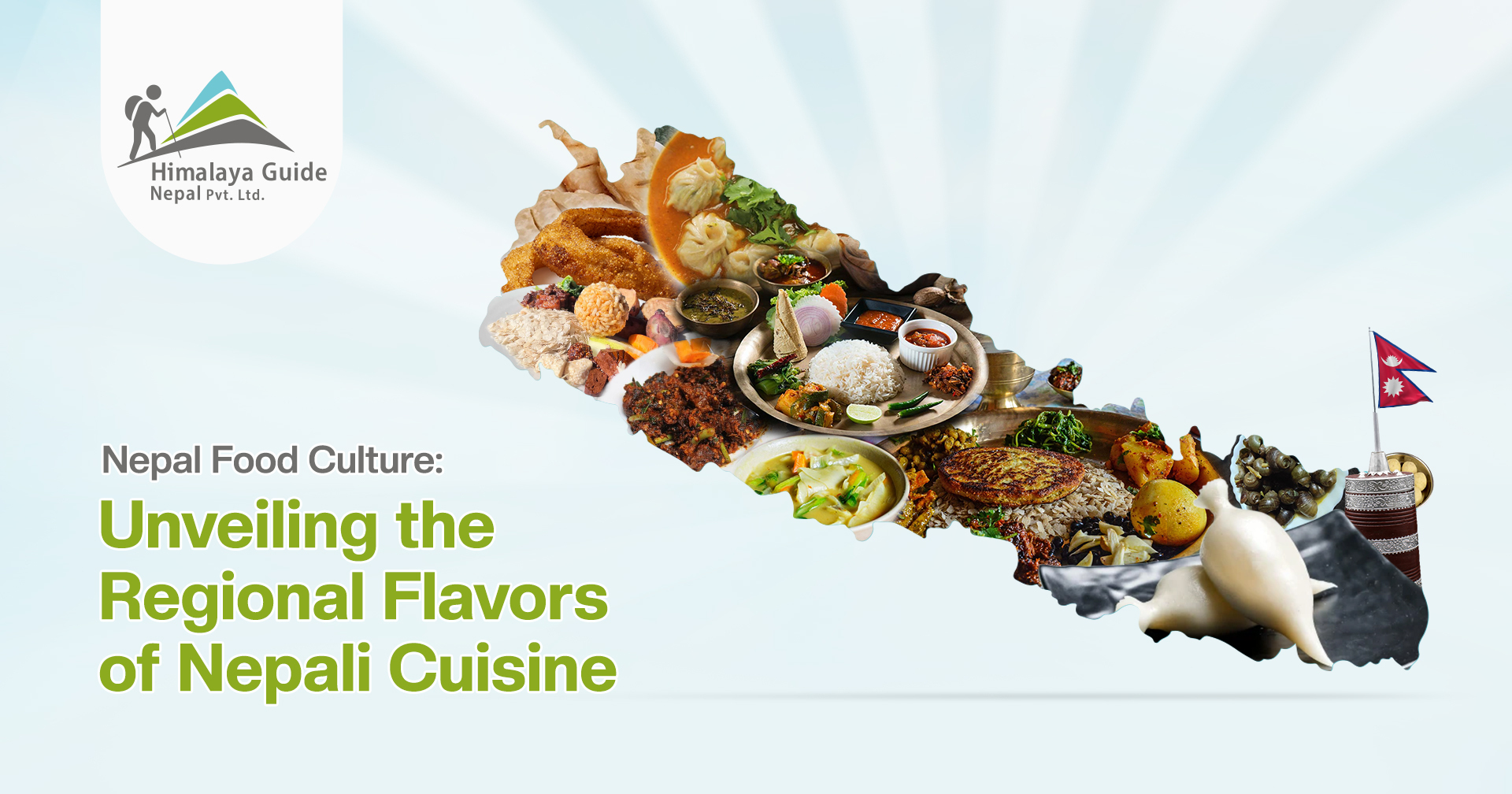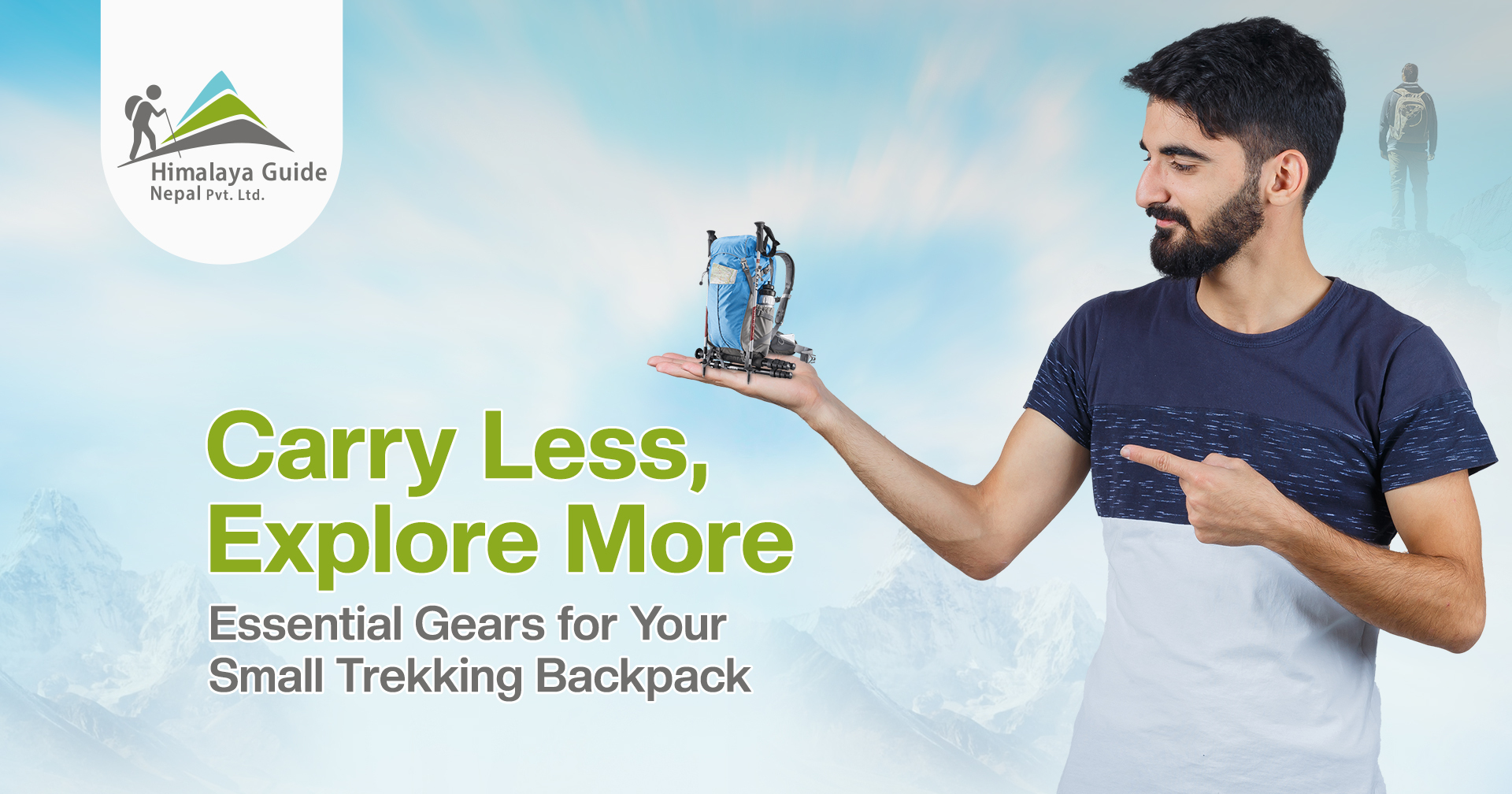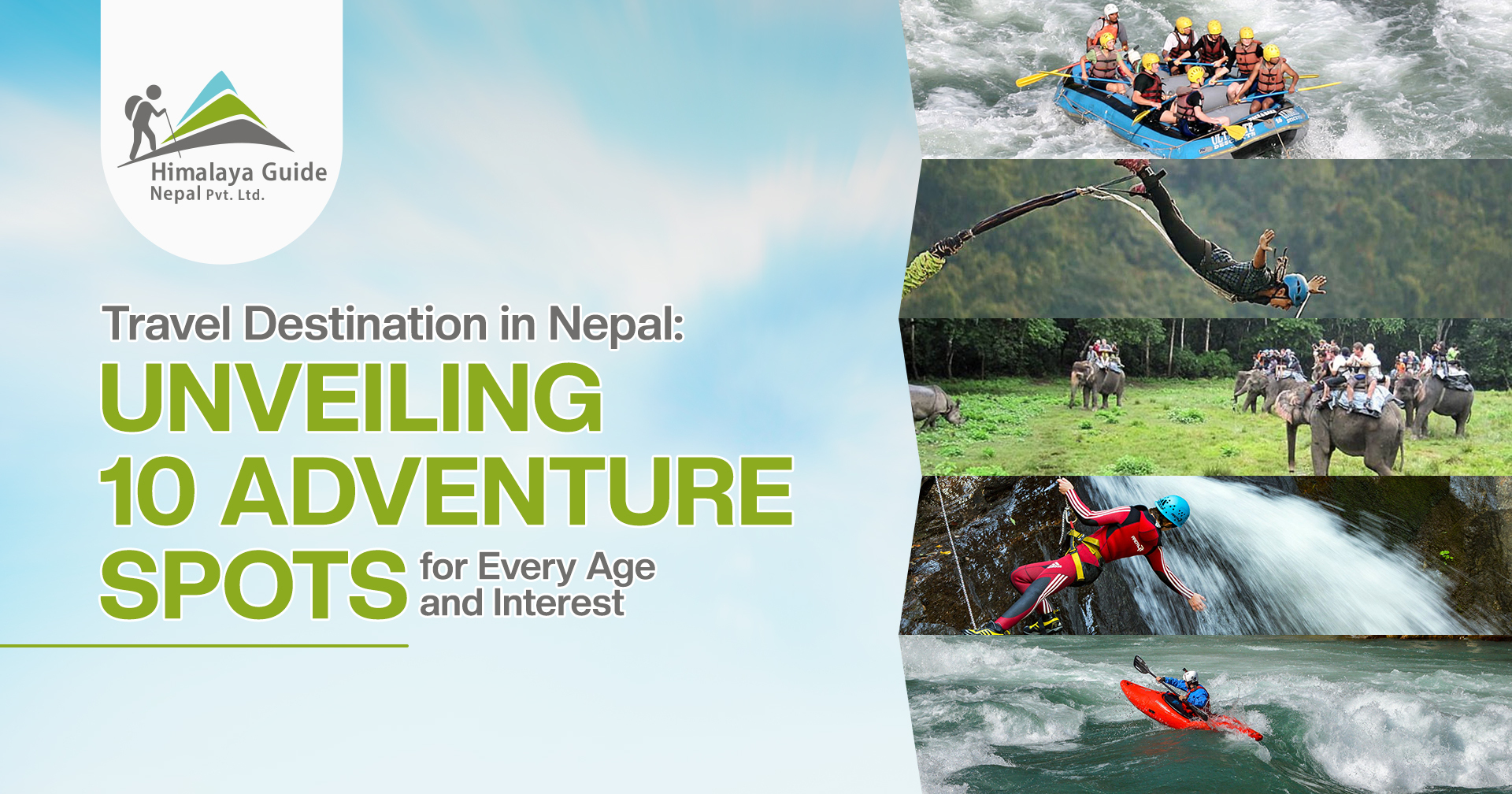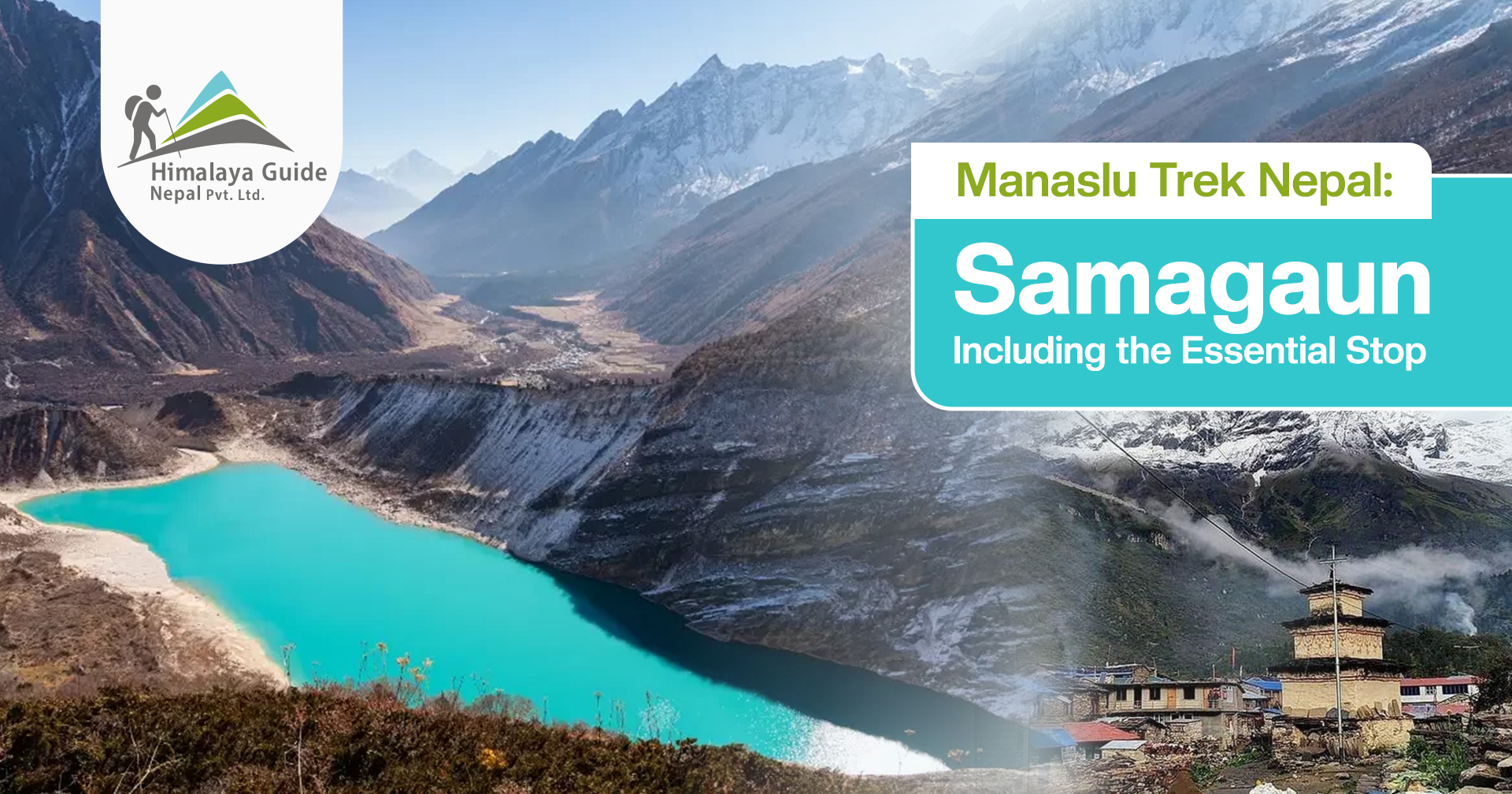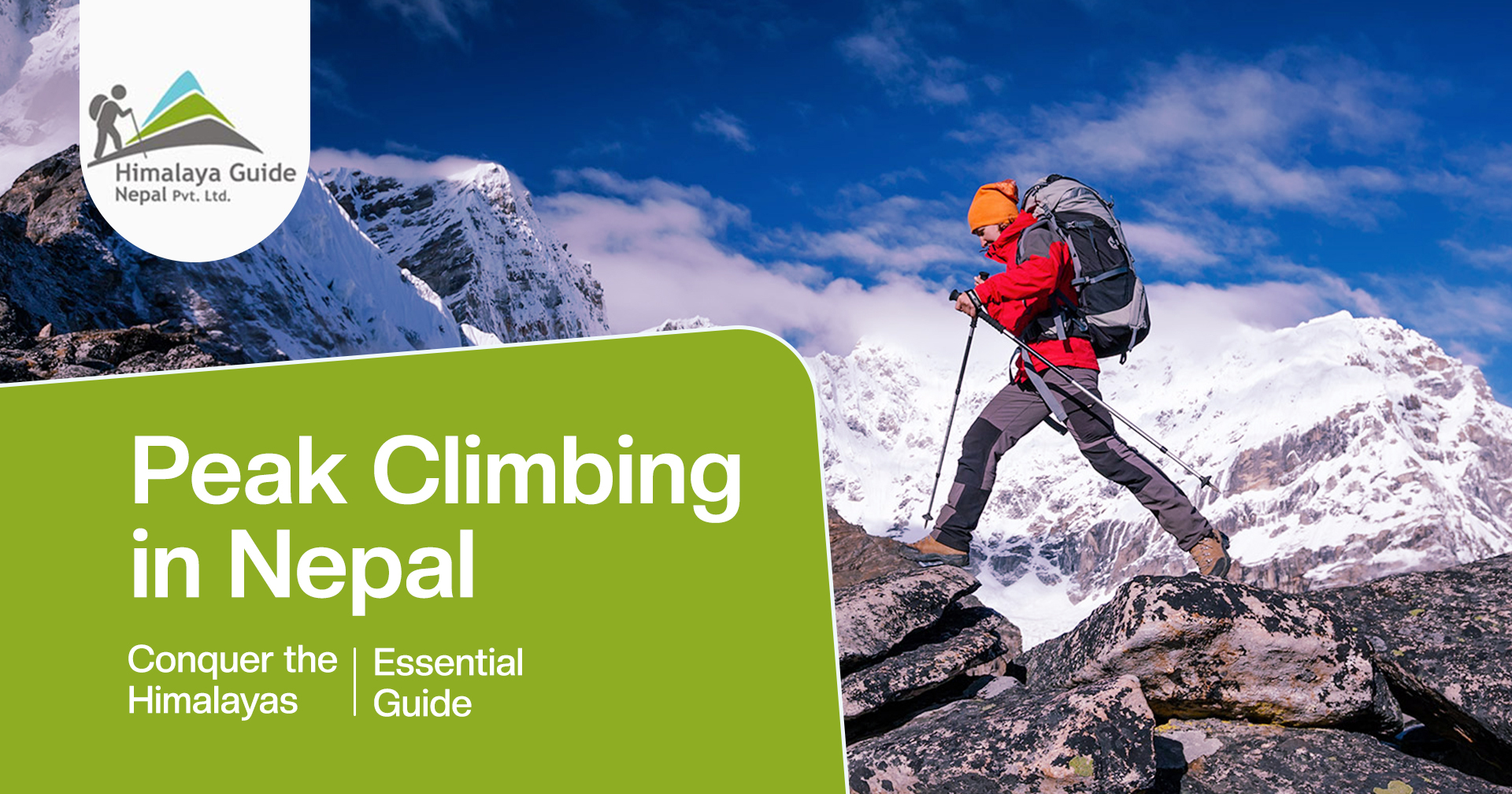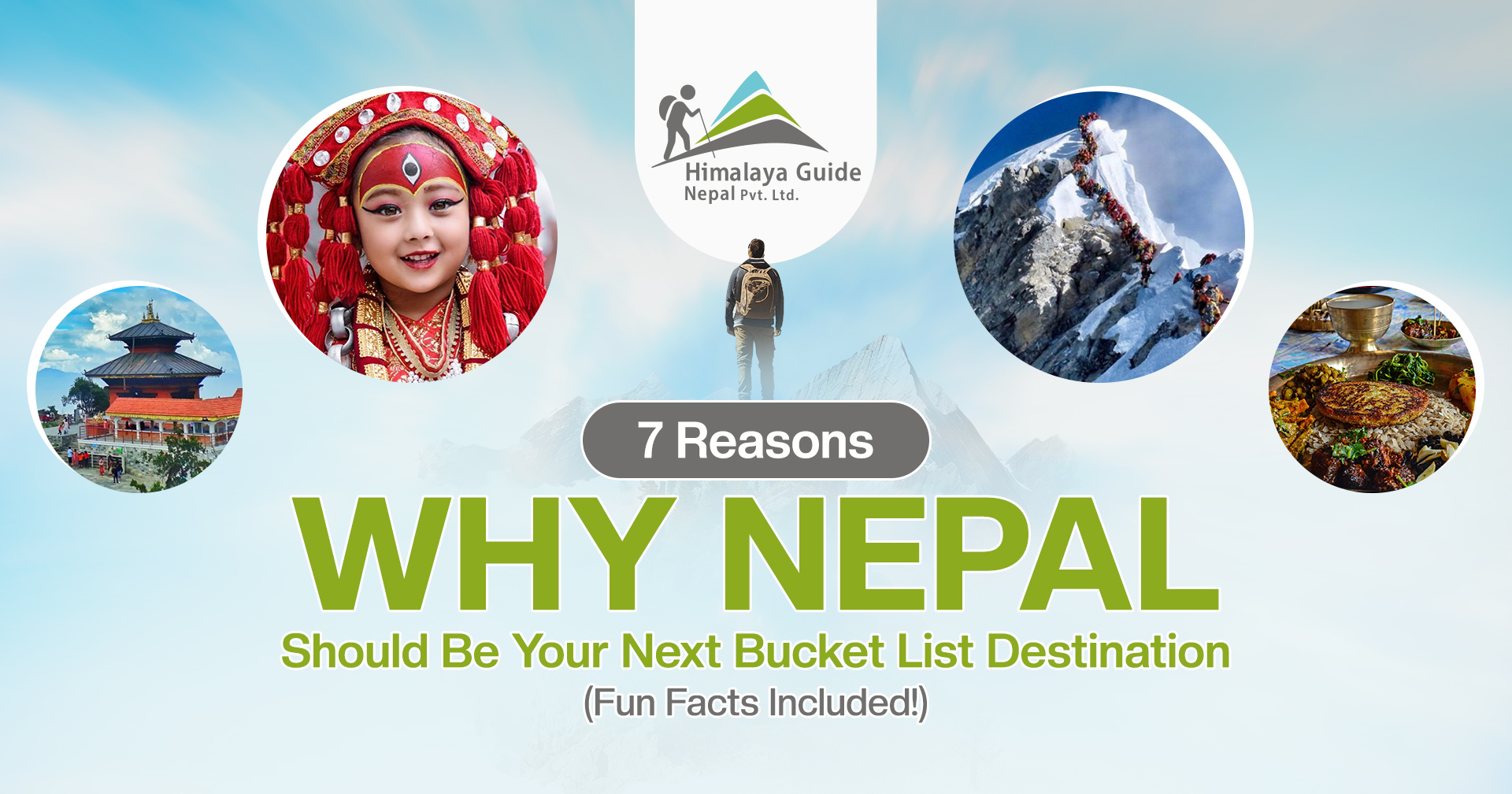There are 12 national parks in Nepal, among which Chitwan National Park is the most visited in south-central Nepal for birdwatching and wildlife safaris. But do you know that the world’s most exciting adventure starts at the base of Sagarmatha National Park, into the wilderness of the Everest region?
Shivapuri Nagarjun National Park, on the other hand, is best suited for hiking destinations in Kathmandu with access to cascading waterfalls, holy Hindu shrines, and places of religious significance in Buddhism and Hinduism.
Trekking, biking, rhino spotting, and looking at the colorful pheasants and the national bird of Nepal (Danfe) in their natural habitat is yet another celebration of trekking in Nepal. The Great Himalayan Trails, all that extensive trail covering from east to west inside the protected area,
Even Mount Makalu, the 5th highest in the world, lies in the Makalu Barun National Park, ranging from the alpine lowlands to the tallest snow giants in the world.
Visit Sagarmatha National Park, Annapurna Conservation Area, Langtang National Park, Makalu Barun National Park, Kanchenjunga Conservation Area, Rara National Park, and Shey Phoksundo National Park, some of the world’s most fascinating trekking regions, besides being the highest in altitude.
1. Rara National Park Trekking
Rara National Park is the country’s smallest national park, located in the Himalayas of northwestern Nepal, established in 1976. Covering 106 sq km in the Mugu and Jumla districts, Rara National Park is best known for its pristine Rara Lake, situated at 2,990 meters (9,810 ft). Do you know, that Rara Lake is the biggest lake in Nepal, with a surface area of 10.8 sq km and a depth of 167 m?
The Rara National Park Trek is the one to consider amidst the serene Himalayan landscape. It takes you around 864 km by road to enter the territory of the Rara National Park from Kathmandu. This remote Rara National Park trek passes through villages like Chalachaur, Sinja Valley, Ghorosinga, Pina, and Burma before reaching the turquoise waters of Rara Lake.
Exploring Rara Lake, a Ramsar site teeming with bird life (with over 272 bird species, including coots, pheasants, grebes, and migratory birds), is magical. Also, you get to spot wildlife like Red Panda, Gray Wolf, and Musk Deer.
You can make this one memorable with a short hike to viewpoints of the Murma village, at over 4,000 m above sea level. Remarkably, with its remoteness, pristine beauty, and rich biodiversity, the Rara National Park Trek offers 7 to 12 days of trekking and hiking paths. Besides, horseback riding, boating, snow adventures, and wildlife safaris can be wonderful adventures on your bucket list.
2. Khaptad National Park Trekking
Khaptad National Park, named after the hermit Khaptad Baba is located in the far-western region of Nepal. Established in 1984, Khaptad National Park expands across the Bajhang, Bajura, Achham, and Doti districts, covering an area of 225 sq km.
The park’s elevation ranges from 1,400m to 3,300m above sea level. And trekking in the rugged terrain in the mid-hills of western Nepal can be a fun activity in the wilderness. To reach the Khaptad National Park trekking region, fly or travel to Nepalgunj, and then you can take a bus to Dipayal.
Or you may take a direct flight to Dhangadhi and take a bus to reach Silgadhi or Doti. From there, the national park entrance is 6 hours away, if you trek (around 30km to reach the Headquarters of the NP).
The key attraction of the Khaptad National Park is the Ashram of the Khaptad Baba, who meditated in the territory for around 50 years of his life. It holds religious significance deeply rooted in the heart of the local people. Besides, the panoramic views of the Saipal Himalayan range (7,031 m) are just amazing. The remote ethnic village trek can also be conducted, with an adventure to Badimalika temple.
Badimalika Trek:
The Badimalika Trek takes you to the rarely visited pilgrimage site in the Bajura district of far-western Nepal. Located in the territory of Khaptad National Park, at an altitude of 4,460m (14,631ft), this holy temple celebrates the goddess Bhagwati Malika Chatur.
The celebration of Janai Purnima is huge here, and the shortest route to reach the Badi Malika temple is via Maure Kailashmandu road, following the trail to Nateshwori Temple. On the way, you can learn about the rich culture of the Baidhya people in remote villages. Also, get to see locals performing Deuda, Hudkeuli, Bhuwo, and Thadi at the festivities and cultural events.
3. Shey Phoksundo National Park Trek
The Shey Phoksundo National Park Trek is one of the largest national parks in northwest Nepal, covering an area of 3,555 sq km. It was established in 1984, and its buffer zone is 1349 km2, covering the park and local communities.
Its elevation ranges from 2,130m in Ankhe to 6,883m at the summit of Kanjiroba Himal. Its specialty is Shey Phoksundo Lake, Nepal’s second largest and deepest lake (at 3,611m altitude and 145m depth), lying in the Suligad River.
Hyatrung Jharana is the highest waterfall in Nepal, approximately 1500 meters above sea level. Thashung Gompa located near Phoksundo Lake and the 900-year-old Buddhist monastery, Tshowa Gompa, are also major attractions in this region. These are Bonpo heritages, the holy land of ancient Bonpo notions.
- SAARC Nationals: Rs. 1,500 per person
- Children below 10: Free
- Nepalis: Rs. 100 per person
- Foreign Nationals: Rs. 3,000 per person
4. Manaslu Conservation Area Trekking
Manaslu Conservation Area is a popular trekking destination in the Mansiri Himal Range, covering an area of 1,663 sq km in the Gorkha District. It covers an area of 1,663 sq km in the Gorkha District. You get to cross the formidable Larkya La Pass at 5,106 m above sea level.
With its steep ascent, long hiking days, and diverse bio-climatic zones from sub-tropical to nival (above the snowline), Manaslu Circuit Trekking is one of the best adventures in the Himalayas of Nepal. You can find a rich biodiversity of approx. 2,000 plant species, 11 types of forests, and over 50 useful plant species in the Manaslu region.
The Manaslu Circuit Trek, with a strenuous 177 km circuit around the Manaslu Himal, takes you to the remote villages of ethnic groups like Gurungs and Tibetan Buddhists.
Manaslu Circuit is considered one of the most challenging treks in Nepal due to its remoteness and high altitudes. Trekking rewards you with views of Ngadi Chuli (7,871 m), Manaslu (8,163 m), and Himalchuli (7,893 m).
5. Makalu Barun National park Trekking
Makalu Barun National Park (MBNP) is a protected area in eastern Nepal, established in 1992. It covers an area of 1,500 sq km and extends into the Sankhuwasabha and Solukhumbu districts, with an additional 830 sq km buffer zone added in 1999.
It takes you to the base camp of Mount Makalu (8,481m), the fifth-highest peak in the world.
Starting from Num (1,560m) and reaching Makalu Base Camp (4,870 m) is an amazing experience one can have. Be part of trekking in the National Bark, with the scenic Inkhu Valley of Makalu Barun from Lukia and Phalpu.
Makalu Barun National Park is rich in biodiversity, with 47 orchid varieties, 67 bamboo species, 86 fodder tree species, 15 oak species, and 48 primrose species. From subtropical forests to glaciated alpine zones, Makalu Barun National Park is worth exploring as the natural habitat of rare endangered mammals, birds, and aquatic animals.
It is considered one of the most demanding treks in the Makalu region. The tropical forests and high-rated snow-capped mountains like Mt. Makalu (8,485m), its glaciers, and rugged terrain are major attractions. Sherpani Col (6,180m), West Col (6,190m), and Amphu Lapsta Pass (5,850m) are three high passes trek in the least discovered region of Makalu.
With proper acclimatization and preparation, the Makalu Barun trek can be an exceptional one. Its perk stands in exploring a remote, lesser-visited region of eastern Nepal, an understanding of diversity, lifestyle, and vegetation in the climatic zone, from from 435 m to above 8000 m.
6. Sagarmatha National Park Trekking
Sagarmatha National Park has been listed as a World Heritage Site since 1979, located in northeastern Nepal’s Khumbu region. It covers an area of 1,148 sq km and a buffer zone of 275 sq km. It includes temperate, alpine, and nival bioclimatic zones from 2,845m to Mount Everest’s summit at 8,848m.
Khumbu Glacier is one of the longest glaciers, located in the Sagarmatha National Park trekking area. Imja, Ngozumpa, and Nangpa glaciers are other major ones. The National Park’s surrounding area is home to the Sherpa, Tamang, and Rai ethnic settlements.
The National Park also includes other highest mountain peaks, Lhotse at 27,940 feet (8,516 meters) and Cho Oyu at 8,201 m (26,906 feet). It shares its eastern border with Makalu Barun National Park, its western border with Gaurishankar Conservation Area, and in the North lies the Qomolangma National Nature Preserve of Tibet.
Sagarmatha National Park also has major avian diversity, with 208 bird species, including the Impeyan pheasant, Himalayan mouse hare (pika), bearded vulture, and snowcock. Mammals like the red panda, snow leopard, musk deer, and Himalayan tahr are also quite often protected in their natural habitats.
Some of the popular trekking activities inside the Sagarmatha National Park are,
- Everest Base Camp
- Everest Three High Passes Trek (Kongma La, Cho La, and Renjo La)
- Gokyo Ri and Lakes
- Island Peak Climb
Start your Sagarmatha National Park trekking activities via the “Hillary Steps” route. The park offers incredible mountain scenery, glaciers, alpine landscapes, and a chance to experience the local Sherpa culture amidst rich Himalayan biodiversity. Prone to Himalayan avalanches but with a good Sherpa guide, nothing is impossible.
7. Langtang National Park Trekking
Langtang National Park is one of the oldest Himalayan national parks in Nepal, established in 1976. It covers an area of 1,710 sq km across the Nuwakot, Rasuwa, and Sindhupalchowk districts of Nepal, with an additional 420 sq km buffer zone added in 1998.
One of the major attractions of Langtang National Park is Langtang Lirung Himal (7,245 m), – The highest peak in the area. Chimse Ridge, Jugal Himal (6,095m), and Dorje Lakpa (6,989m) are other major peaks inside the trekking region.
Besides, trekkers find solace in crossing the challenging Ganja La pass (5,122m). Langtang National Park is also known for over 345 species of birds, like the Impeyan pheasant, ibisbill, snow partridge, and crimson-horned pheasant. In addition, 46 species of mammals, including endangered ones, are protected in this area.
1,043 species of vascular plants, 15 endemic rhododendron species, and over 70 butterfly species are found in this region. Oaks, rhododendrons, and vegetation in the Langtang region give colorful displays in the spring and autumn seasons on the Langtang heritage trekking trail.
Ghora Tabela and Kyanjin Ri viewpoint (4,773 m / 15655 ft), the highest point in Langtang, are famous parts of this region. Even, the Panch Pokhari Trek is done in the Langtang National Park. Besides, you get to see the main ethnic groups, Tamangs, Bhotias (of recent Tibetan origin), and Yolmo people living their lifestyle for generations in the Helambu region.
National Park Trekking Guide Tips for Beginners in Nepal
As a beginner in trekking inside the National Park and chasing the Himalayan range in Nepal, questions can be many. Unlike other national parks in Nepal, it mostly covers high mountain areas, so prepare to acclimatize and layer accordingly.
- Choose the right trek and among the most popular choices for beginners
- Shorter treks, like the Poon Hill trek in the Annapurna conservation area, can be relaxing and less challenging.
- Langtang Valley Trek provides an equally comprehensive experience of the remote wilderness of Langtang National Park.
- Hire a licensed guide to ensure the safety of the National Park trekking trails.
- Attain a TIMS card and a restricted area permit for hassle-free exploration.
- Stay hydrated and pack smarter with a minimalistic strategy.
- Make friends on the trail and leave no trace in the protected areas of Nepal.
Conclusion
National park trekking in Nepal provides you with an opportunity to understand the wilderness, diversity, and cultural exploration. It’s a fantastic way to challenge yourself to visit the natural habitats of rare and endangered species in the high-altitude region.
However, it’s important to be prepared with strong mental fortitude and physical and endurance training. Choosing the right trekking trail suited for beginners with the proper gear, navigational challenges, and safety considerations is important. Make the most of the teahouse trekking option for connecting with locals and their lifestyle in the high-altitude remote villages.
Remember to take a step toward respecting the environment and local cultures with responsible trekking practices. Explore, by learning basic Nepali phrases, packing your bag smartly, and embracing the adventure that national park trekking has to offer!

